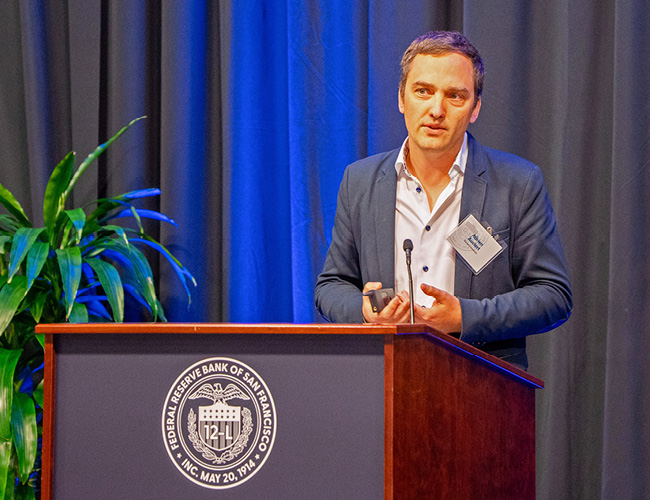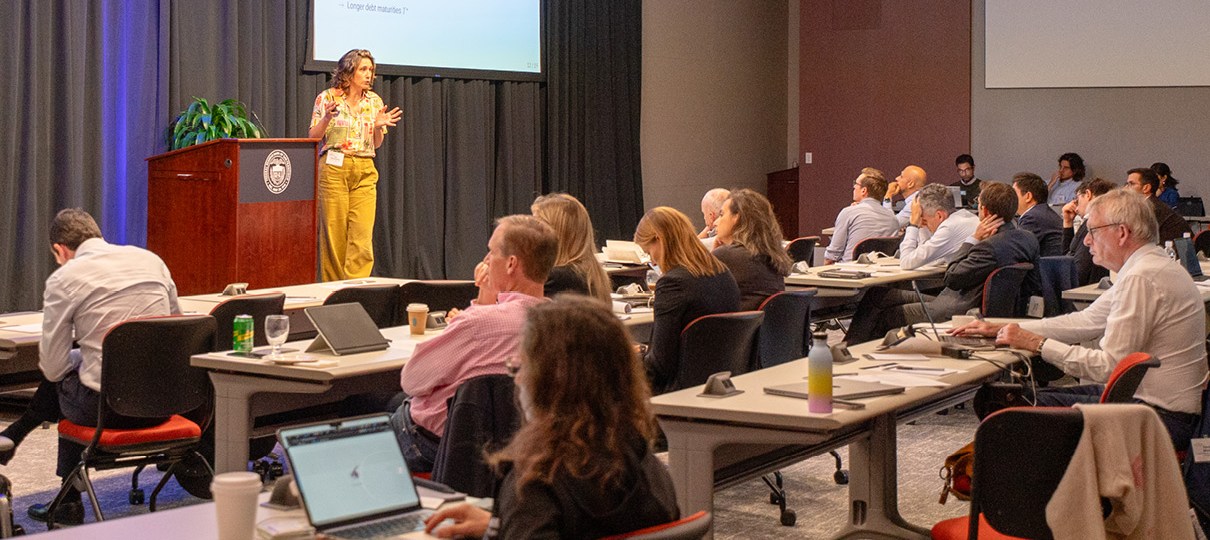Last fall, we launched the Center for Monetary Research (CMR) at the Federal Reserve Bank of San Francisco. One year in, we’re encouraged by the strong engagement and positive responses from the academic and policy communities.
Building on the SF Fed’s long tradition of influential research in monetary economics and macro-finance, the Center aims to advance our understanding of the interplay of monetary policy, financial markets, and the macroeconomy. Our idea was to bundle and strengthen our efforts in this area, and to provide a trusted platform for publications, data, events, and dialogue on policy-relevant research.
We capped off our first year by launching a new research award to recognize an especially influential monetary economist. Here’s a brief review of this and other Center activities over the past year.
Research publications
The Center’s primary channel for disseminating new research is through research publications. In our first year, we published 18 FRBSF Working Papers on topics ranging from monetary transmission to yield curve dynamics and macro-finance linkages. Our economists also authored 17 CMR-related FRBSF Economic Letters, which are written to make research more accessible to a broader audience.
Data products
From the outset, CMR has emphasized making high-quality data and indicators available to the public.
Our data series are intended to be useful not only in academic research but also for current policy analysis. For example our market-based monetary policy uncertainty measure uncertainty about the future policy rate based on option prices. This indicator shows that, over the first half of 2025, interest rate uncertainty rose, but it has since declined noticeably.
We also offer related series on interest rate probability distributions and the Treasury yield skewness, which provide different perspectives on uncertainty and risk about the future course of interest rates and the economy.
Other data offerings over the past year include high-frequency monetary policy surprises, the proxy fed funds rate, estimates of Treasury term premiums, and zero lower bound probabilities. We update these series regularly to keep them timely and relevant for research and policy analysis.
Workshops and conferences
A central purpose of the CMR is to serve as a hub for scholarly exchange. Over the past year, we hosted a wide range of events with research presentations and lively discussions.
In September we launched a new Virtual Seminar on Monetary Economics (VSME) as part of the San Francisco Fed’s continuing collaboration with CEPR, a global research and policy network. This joint initiative demonstrates our commitment to foster dialogue and exchange of ideas across institutions and on a global scale.
Our other workshops and conferences include quarterly Macro-Finance Workshops with visiting scholars and local researchers, our annual Macro-Finance Conference, February’s flagship Macroeconomics and Monetary Policy Conference, the Bay Area Finance Workshop in with Berkeley Haas and Stanford Graduate School of Business, and our Fixed Income Conference, which we organize jointly with the Bank of Canada and the Chicago Fed.
The Janet Yellen Award for Monetary Research
A highlight of the year was recognizing Adrien Auclert from the Stanford Graduate School of Business as our inaugural recipient of the Janet Yellen Award for Monetary Research. We presented the award at our October 10, 2025, Macro-Finance Conference.
The Center created the award to recognize groundbreaking contributions by early-career scholars in macro-finance and monetary economics. The annual award reflects both our commitment to supporting the next generation of researchers and our pride in celebrating the SF Fed’s former president and Federal Reserve Chair.
Auclert’s important contributions to monetary policy research have substantially advanced our understanding of crucial policy issues, including how heterogeneity affects monetary policy transmission.

Photos by Sean Qiu.
Looking ahead
The CMR’s first year has established a strong foundation for the future. Going forward, we plan to further expand the Center’s data products, including a new policy path calibration tool and a comprehensive monetary policy event-study database. We will continue our successful event series to stimulate innovative research and productive discussions.
We invite you to explore the CMR website and subscribe to our newsletter to stay informed about new research, events, and opportunities to engage with our economists. For any questions or inquiries, please contact us at cmr@sf.frb.org
The views expressed here do not necessarily reflect the views of the management of the Federal Reserve Bank of San Francisco or of the Board of Governors of the Federal Reserve System.

